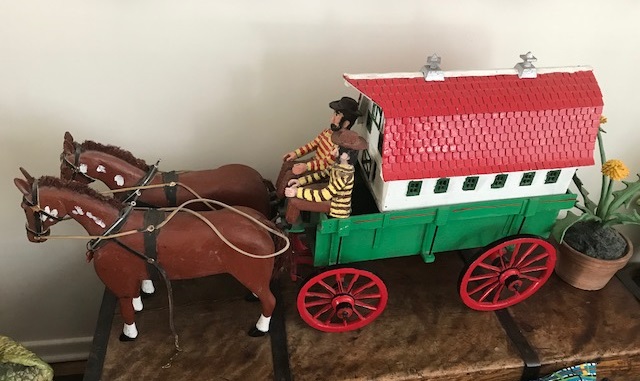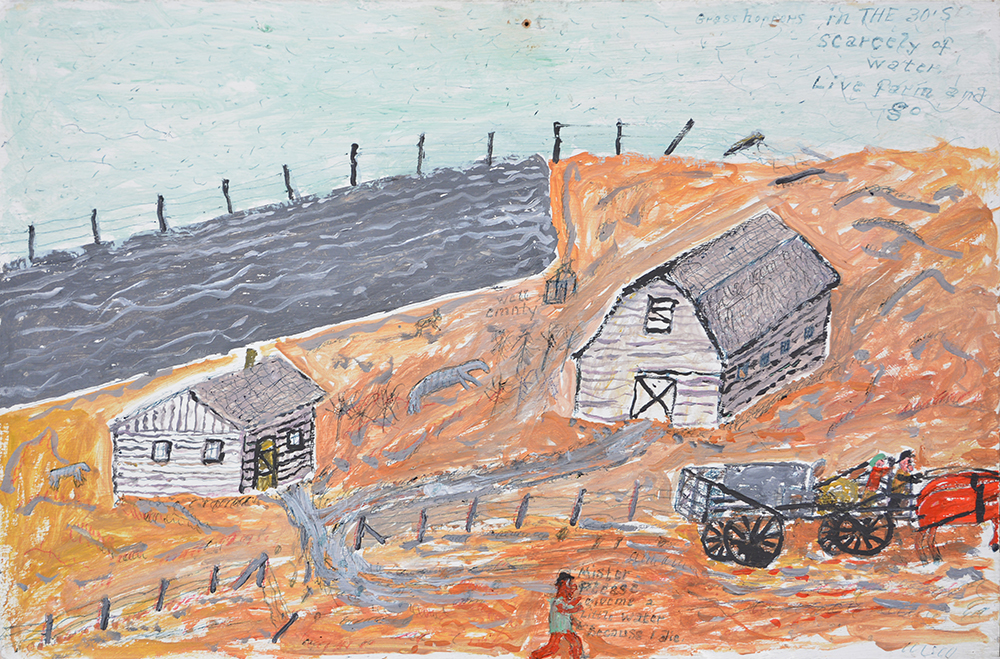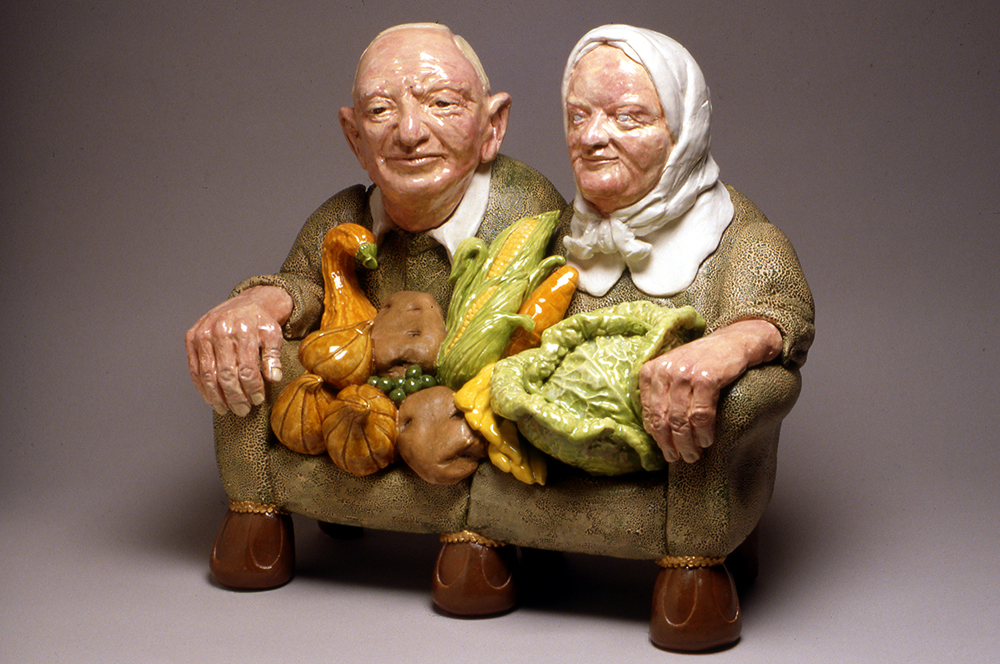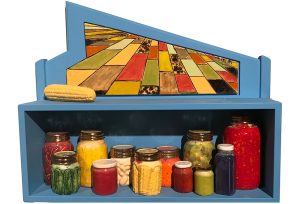The Everyday
Many artists in the exhibition, A Prairie Vernacular, share a focus on ordinary settings and the everyday, offering informality that speaks to the definition of ‘vernacular’. These artists commonly and engagingly evoke everyday life in their works and, for many, that was a rural one. Two artists whose works reflect everyday life are Frank Cicansky and his son Victor Cicansky. Each artist takes inspiration from day-to-day experiences, representing this in their own way.
Frank Cicansky immigrated to Saskatchewan from Romania in 1926. First he lived in the Dirt Hills south of Moose Jaw, and later moved to Regina. He was a blacksmith and wheelwright, and was in the Army through WWII. After the war he worked in construction. He built houses in Saskatchewan with his wife and ten children. Whenever the family outgrew a house, he built another. He also built the furniture and tools used there. Out of a need for self-reliance, he had many useful skills.
Like many folk artists, he worked in a variety of media. He made wooden carvings, sculptures, and toys reflecting pioneer life. There were replicas of horses and wagons, threshing teams, barns, and houses he built. In the 1970s, he began painting, depicting the realities, good and bad, for a new Canadian living on the prairies in the 1930s and 1940s. He painted memories of both setbacks and the perseverance involved in his early years in Saskatchewan. From the hardships of families in the Great Depression to successful harvests in better years. Art fans at the time appreciated folk art like this not only for its abstraction, but its honesty.
Victor Cicansky was born in Regina in 1935. Gardening and food storage were key to life in his youth as a first-generation Canadian born to Romanian immigrants. They remain important to him today. He grew up in the “Garlic Flats” neighbourhood of Regina, which was an interesting meeting of urban and rural settings. It was in the city of Regina, but lacked indoor plumbing and electricity. It also opened onto land east of the city with wild plant growth. As a diverse but lower-income neighbourhood, there were no lawns in Garlic Flats. Any spare land was for gardening. Residents operated subsistence farms in their yards and garden allotments by the railway tracks.
The garden is a recurring theme in Cicansky’s work because he believed that “Any human experience is material for art making”. His art links to memories of his family, upbringing, and prairie experience. While he was a student, the art world was taking an interest in folk art. This allowed him to respond to his regional experience through a contemporary art lens. He could reflect an urban/rural hybrid experience using something that exemplifies it well, a garden.
He developed his own iconography around his childhood home. It includes ceramic replicas of jars of preserved vegetables. These are beautiful, with a gem-like quality. His iconography also includes memorable furniture like the family’s table, couches, or armchairs. These figure into the work alongside the vegetables.
See Bibliography for sources.





